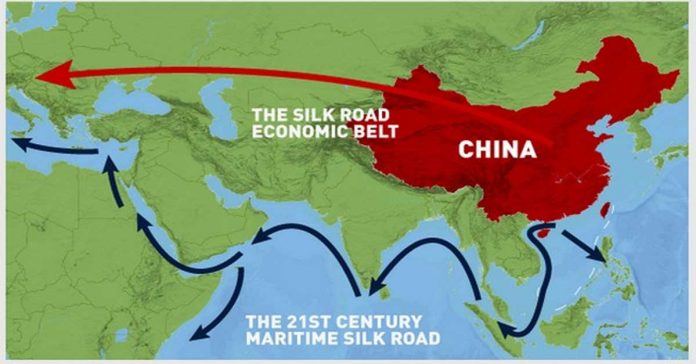A new survey has revealed that people generally view China’s Belt and Road Initiative favorably, categorizing the BRI as a net “opportunity” for their home countries.
The S. Rajaratnam School of International Studies (RSIS) in Singapore conducted an online survey from June 20 to July 19, in which more than 1,200 Asian “opinion leaders” were invited to respond. Asian opinion leaders were defined as policymakers, academics, businesses, and media practitioners from 26 Asian countries that have signed a Belt and Road Initiative (BRI) agreement with China.
From Laos, a total of 12 respondents participated, including nine government officials and three academia.
The Belt and Road Initiative, officially unveiled in 2013, is China’s landmark foreign and economic policy initiative to achieve improved connectivity, regional cooperation, and economic development on a trans-continental scale. China has promoted the BRI as a cooperative initiative that will lead to a win-win situation for both China and BRI partner countries.
Findings
Among the BRI’s five objectives, respondents generally felt that achieving infrastructure connectivity and unimpeded trade are more relevant to their countries than financial integration, policy coordination, and people-to-people relations, according to RSIS.
On infrastructure types, respondents said energy, transport, and industrial infrastructure should receive the most focus in Asia, according to the school.
In addition, the majority of the respondents felt that the BRI provides a platform for BRI countries to attract trade, investment, and tourists from China and elsewhere. They also expected the BRI to stimulate economic growth and technological advancement while closing infrastructure gaps, RSIS added.
Meanwhile, better political relations with China due to the initiative was also highlighted by close to three-fifths of the respondents as a key benefit although respondents expressed concerns over potential downsides like China’s influence expansion, influx of Chinese migrant workers, the projects’ environmental implications, lack of technology transfer opportunities, and risks related to debt overhang, said the school.
Overall, the respondents viewed the Belt and Road Initiative favorably, RSIS said, adding that the opinion leaders who categorized the BRI as a net “opportunity” significantly outnumbered those who saw the BRI as a “net risk”.
To ensure the success of the project, respondents said enhancing transparency, offering more capacity building and local employment, adapting the BRI to specific needs of foreign partners, and allowing non-Chinese contractors to bid for projects top the list of recommendations for Beijing, according to the school.
As for their home governments, the respondents felt that they should focus on good governance, negotiate with China for best possible terms, make sure the BRI fits in a national infrastructure development strategy, perform due diligence, and be level with the general public about the pros and cons of the BRI if they were to make the most of the BRI, RSIS added.
From Landlocked to Land-linked
The Vientiane Times reported in April that the Lao President Bounnhang Vorachit “voiced the Lao government’s support for the China-led Belt and Road Initiative, saying the global project will help to transform Laos from being landlocked into a land link.”
His remarks were reportedly made at a conference where a total of 37 heads of state and government, the UN Secretary-General and representatives from international organizations attended to review the implementation of the initiative.
At that time, the paper quoted President Bounnhang as saying that the initiative was in line with the Lao government’s policy to transform itself from being a landlocked country into a land link within the region.
President Bounnhang also said the Belt and Road Initiative was compatible with the Lao government’s policy because the country was plowing ahead with its renovation policy after opening its doors to the outside world in 1986.
He added the Lao government viewed the initiative as being based on mutual benefit and cooperation, adding that in light of this development concept Laos believes the initiative will bring peace, stability, and prosperity to the region.
Vientiane Times also noted that one of the notable ways in which Laos is benefiting from the initiative is China’s support for the Lao-China railway.
The planned 417-km railway, which connects Lao capital Vientiane with the Chinese border, traverses the provinces of Vientiane, Luang Prabang, Oudomxay and Luang Namtha, passing through 75 tunnels with a combined length of 197.83km.
The opening of the railway is expected to be in 2021.



